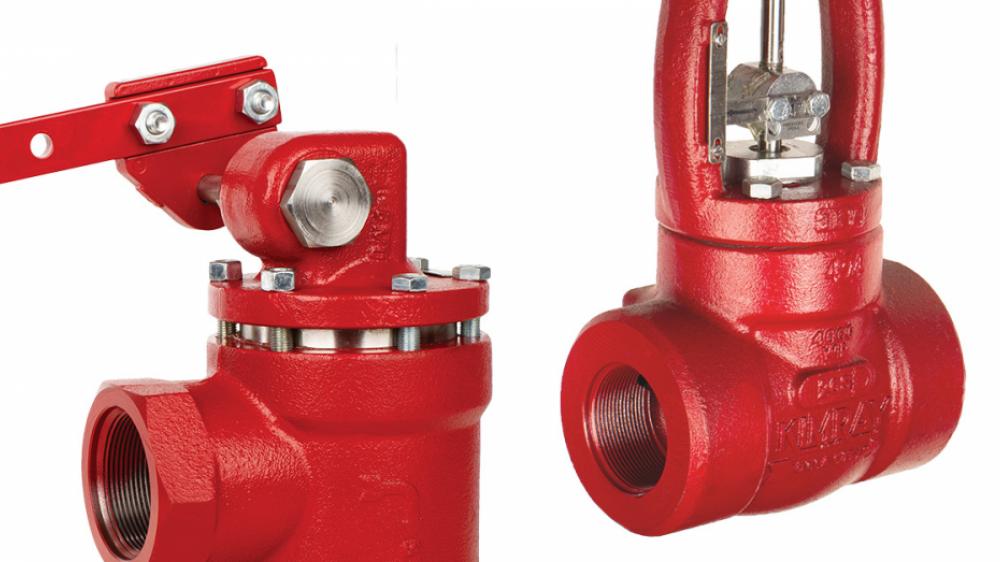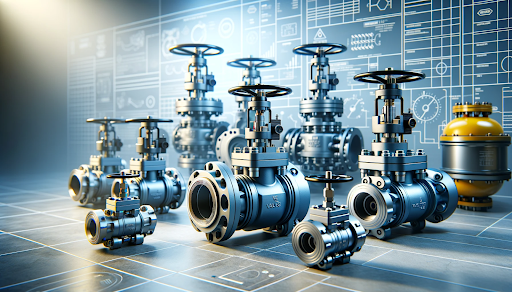Picking the Right Control Valves: A Guide to Optimal System Performance
Picking the Right Control Valves: A Guide to Optimal System Performance
Blog Article
Achieve Seamless Combination and Control With Top Quality Structure Automation Controls
In the world of modern-day structure management, the value of quality building automation controls can not be overemphasized. Accepting high quality structure automation controls is not merely a matter of convenience however a calculated vital for organizations aiming to optimize their centers' performance and sustainability.

Evolution of Building Automation Controls
Throughout the previous few decades, the advancement of developing automation controls has significantly transformed the means buildings are managed and run. Building automation systems primarily focused on fundamental features such as regulating air, home heating, and air flow conditioning (HVAC) systems. Nonetheless, as modern technology progressed, these controls have actually come to be extra advanced, enabling for a wider range of structure systems to be incorporated and handled centrally.
The development of developing automation controls has actually seen a shift towards more intelligent systems that can adjust to altering conditions in real-time. This versatility is essential for maximizing power efficiency and guaranteeing owner comfort. Additionally, contemporary building automation controls currently use attributes such as predictive maintenance, remote tracking, and data analytics, enabling facility managers to make data-driven decisions to boost building efficiency.

Advantages of High Quality Assimilation
The improvement in structure automation controls towards even more smart systems has underscored the considerable advantages of top quality integration in enhancing building procedures and boosting overall performance. This centralized control likewise provides much better presence and understandings right into structure performance, enabling proactive maintenance and optimization techniques. In general, the benefits of high quality integration in building automation controls are indisputable, offering boosted effectiveness, comfort, and functional performance.
Enhanced User Experience and Access
Enhancing customer interaction with building automation controls through intuitive design and improved availability boosts the total experience for occupants and facility supervisors alike. By concentrating on user experience, constructing automation systems can become much more efficient and straightforward. Intuitive interfaces, clear navigating, and adjustable settings empower customers to engage with the controls quickly and successfully.
Ease of access functions play a crucial duty in making sure that all individuals, consisting of those with specials needs, can utilize the structure automation manages easily. Including functions such as voice commands, tactile switches, and color-contrasted screens can enhance access and make the controls extra inclusive.
Moreover, enhanced user experience leads to greater individual contentment, raised performance, and far better decision-making. Owners can readjust environmental settings according to their preferences, while facility here supervisors can successfully check and take care of building systems - control valves. Overall, focusing on customer experience and access in building automation controls adds to an extra seamless and efficient building setting for all stakeholders entailed
Lasting Practices With Automation

Additionally, automation can help with the integration of sustainable energy sources such as solar panels or wind turbines right into structure operations. Via automation, buildings can line up with contemporary sustainability goals and add to a greener future.
Future Trends in Structure Control Solution
One famous fad shaping the future of structure control systems is the raised integration of Artificial Intelligence (AI) and device learning. Additionally, the Net of Points (IoT) is revolutionizing structure control systems by linking devices and sensors to streamline procedures and enhance efficiency.
Another key trend is the focus on cybersecurity actions to shield against potential threats to constructing automation systems. As buildings become more interconnected, making certain durable cybersecurity methods will be vital to safeguard delicate information and avoid unapproved accessibility.
Furthermore, the shift in the direction of cloud-based platforms is getting momentum, permitting for streamlined control and remote accessibility to building systems. This assists in less complicated monitoring, maintenance, and updates, boosting the overall performance and versatility of structure control systems. As technology remains to development, these trends are anticipated to shape the future landscape of structure automation controls, driving innovation and sustainability in the developed setting.
Conclusion
Finally, building automation controls have actually developed considerably, offering various advantages such as boosted individual experience, availability, and sustainable techniques. Quality integration plays a vital role in achieving smooth control and reliable operation of building systems. Future fads in building control systems are most likely to focus on further boosting automation capabilities for boosted energy efficiency and total performance. It is necessary for building proprietors and operators to focus on the fostering of top quality structure automation manages to maximize structure procedures and attain long-term sustainability goals.
In the world of find out here now contemporary building administration, the importance of quality structure automation controls can not be overstated. On the whole, the development of building automation regulates continues to drive advancement in the building management industry, supplying brand-new home opportunities for creating smarter and more lasting buildings.
The improvement in building automation regulates in the direction of more intelligent systems has actually highlighted the significant advantages of high quality integration in maximizing structure procedures and improving overall performance. Generally, prioritizing user experience and ease of access in building automation controls contributes to a more effective and seamless building environment for all stakeholders involved.
It is necessary for structure owners and drivers to focus on the adoption of quality building automation manages to enhance structure procedures and achieve long-lasting sustainability objectives. - control valves
Report this page